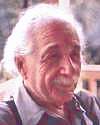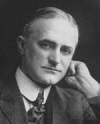 | TODAY IN SCIENCE HISTORY NEWSLETTER - 14 MARCH |
| Feature for Today |
 Today is PI day! ... from the form of the date as written 3-14 in the U.S. Today is PI day! ... from the form of the date as written 3-14 in the U.S.On 14 Mar 1879, Albert Einstein was born—one of the best-known scientists, and who needs no further introduction. No doubt you have read what others have written about him, and heard various quotations by him. But how much have you read about his theory written in his own words? Fortunately, you can remedy that by reading a description of his own theory, written for the general public, published shortly after World War I, in the Times (28 Nov 1919), entitled simply: My Theory. Therein, his concluding remark has become a familiar quotation: "By an application of the theory of relativity to the taste of readers, today in Germany I am called a German man of science, and in England I am represented as a Swiss Jew. If I come to be represented as a b�te noire, the descriptions will be reversed, and I shall become a Swiss Jew for the Germans and a German man of science for the English!" |
| Book of the Day | |
| |
| Quotations for Today | |
 | "Equations are more important to me, because politics is for the present, but an equation is something for eternity." |
| "Few problems are less recognized, but more important than, the accelerating disappearance of the earth's biological resources. In pushing other species to extinction, humanity is busy sawing off the limb on which it is perched." | |
| "I've found out so much about electricity that I've reached the point where I understand nothing and can explain nothing." (Describing his experiments with the Leyden jar.) | |
| QUIZ | |
| Before you look at today's web page, see if you can answer some of these questions about the events that happened on this day. Some of the names are very familiar. Others will likely stump you. Tickle your curiosity with these questions, then check your answers on today's web page. | |
| Births | |
 |  Albert Einstein, born 14 Mar 1879 was a German-American physicist who advanced a series of theories that proposed entirely new ways of thinking about space, time, and gravitation that were a profound advance over the old Newtonian physics and revolutionized scientific and philosophic inquiry. Albert Einstein, born 14 Mar 1879 was a German-American physicist who advanced a series of theories that proposed entirely new ways of thinking about space, time, and gravitation that were a profound advance over the old Newtonian physics and revolutionized scientific and philosophic inquiry. |
| Deaths | |
 |  George Eastman (1854-1932) was an American inventor, manufacturer and industrialist. George Eastman (1854-1932) was an American inventor, manufacturer and industrialist. What trademark did he adopt for his products? What trademark did he adopt for his products? |
| Events | |
 On 14 Mar of a certain year, the first offshore sulphur mine extracted sulphur. It was built off the Louisiana coast. On 14 Mar of a certain year, the first offshore sulphur mine extracted sulphur. It was built off the Louisiana coast.  In what decade was the first U.S. offshore sulphur mine established? In what decade was the first U.S. offshore sulphur mine established? | |
 On 14 Mar 1903, the first US national bird sanctuary was established by executive order issued by President Theodore Roosevelt. This order protected a nesting colony of herons. On 14 Mar 1903, the first US national bird sanctuary was established by executive order issued by President Theodore Roosevelt. This order protected a nesting colony of herons.  In which State was this first U.S. bird sanctuary established? In which State was this first U.S. bird sanctuary established? | |
 |  On 14 Mar 1794, Eli Whitney patented a famous invention that replaced much processing by hand labour, and revolutionized an industry in the southern US. On 14 Mar 1794, Eli Whitney patented a famous invention that replaced much processing by hand labour, and revolutionized an industry in the southern US.  What was Whitney's invention? What was Whitney's invention? |
| Answers |
When you have your answers ready to all the questions above, you'll find all the information to check them, and more, on the March 14 web page of Today in Science History. Or, try this link first for just the brief answers. Fast answers for the previous newsletter for March 13: Percival Lowell; oxygen; Proxima Centauri; Henry Shrapnel; the decade include this year 1930; a planet, Uranus. |
| Feedback |
 If you enjoy this newsletter, the website, or wish to offer encouragement or ideas, please send feedback by using your mail reader Reply button. If you enjoy this newsletter, the website, or wish to offer encouragement or ideas, please send feedback by using your mail reader Reply button. |
--
If you do not want to receive any more newsletters, Unsubscribe
To update your preferences and to unsubscribe visit this link


Δεν υπάρχουν σχόλια:
Δημοσίευση σχολίου